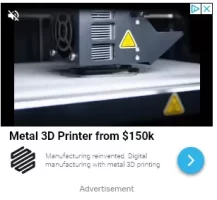Interesting. I work in manufacturing (I'm a mechanical design engineer). I design injection molded parts, injection molds (the mold set itself that is used to make injection molded parts), and I do machine design. I've designed firearms, car parts, airplane parts, industrial machine parts, etc.
I know that PCBA (printed circuit board assembly) manufacturing equipment takes up very little space, in the typical operation - the pick and place robot, solder wave oven, etc. I could see the potential for offering CM (contract manufacturing) as a business in this area.
As for 3D printing, I will echo what others have said in prior posts - its good for prototyping and in some instances, small production runs. The more pro level equipment gives better finishes on parts, while cheap, hobby grade equipment gives poor finishes. I have 3 of my own 3D printers.
You could run a CNC in your garage, but it will be a small mill and/or lathe, aka hobby level. We only have 220v single phase in residential homes, (pro machines are often 3 phase) and the concrete slabs are not rated for the weight of a pro-level CNC, not to mention the required room for those. I work with CNC machinists daily so I have some experience in the matter.
THe flat pack subwoofer kits is an interesting idea for a home based CNC business - using CNC routers, which are a lot cheaper than metal cutting CNC, due to the reduced need for accuracy & precision. The wood cutting CNC machines are a lot lighter duty than metal cutting machines.
I know that PCBA (printed circuit board assembly) manufacturing equipment takes up very little space, in the typical operation - the pick and place robot, solder wave oven, etc. I could see the potential for offering CM (contract manufacturing) as a business in this area.
As for 3D printing, I will echo what others have said in prior posts - its good for prototyping and in some instances, small production runs. The more pro level equipment gives better finishes on parts, while cheap, hobby grade equipment gives poor finishes. I have 3 of my own 3D printers.
You could run a CNC in your garage, but it will be a small mill and/or lathe, aka hobby level. We only have 220v single phase in residential homes, (pro machines are often 3 phase) and the concrete slabs are not rated for the weight of a pro-level CNC, not to mention the required room for those. I work with CNC machinists daily so I have some experience in the matter.
THe flat pack subwoofer kits is an interesting idea for a home based CNC business - using CNC routers, which are a lot cheaper than metal cutting CNC, due to the reduced need for accuracy & precision. The wood cutting CNC machines are a lot lighter duty than metal cutting machines.
Dislike ads? Become a Fastlane member:
Subscribe today and surround yourself with winners and millionaire mentors, not those broke friends who only want to drink beer and play video games. :-)
Membership Required: Upgrade to Expose Nearly 1,000,000 Posts
Ready to Unleash the Millionaire Entrepreneur in You?
Become a member of the Fastlane Forum, the private community founded by best-selling author and multi-millionaire entrepreneur MJ DeMarco. Since 2007, MJ DeMarco has poured his heart and soul into the Fastlane Forum, helping entrepreneurs reclaim their time, win their financial freedom, and live their best life.
With more than 39,000 posts packed with insights, strategies, and advice, you’re not just a member—you’re stepping into MJ’s inner-circle, a place where you’ll never be left alone.
Become a member and gain immediate access to...
- Active Community: Ever join a community only to find it DEAD? Not at Fastlane! As you can see from our home page, life-changing content is posted dozens of times daily.
- Exclusive Insights: Direct access to MJ DeMarco’s daily contributions and wisdom.
- Powerful Networking Opportunities: Connect with a diverse group of successful entrepreneurs who can offer mentorship, collaboration, and opportunities.
- Proven Strategies: Learn from the best in the business, with actionable advice and strategies that can accelerate your success.
"You are the average of the five people you surround yourself with the most..."
Who are you surrounding yourself with? Surround yourself with millionaire success. Join Fastlane today!
Join Today


